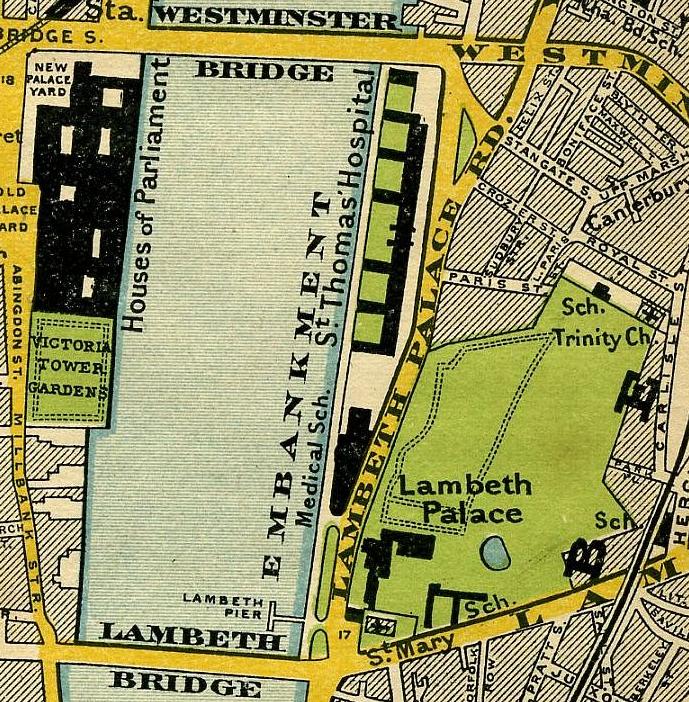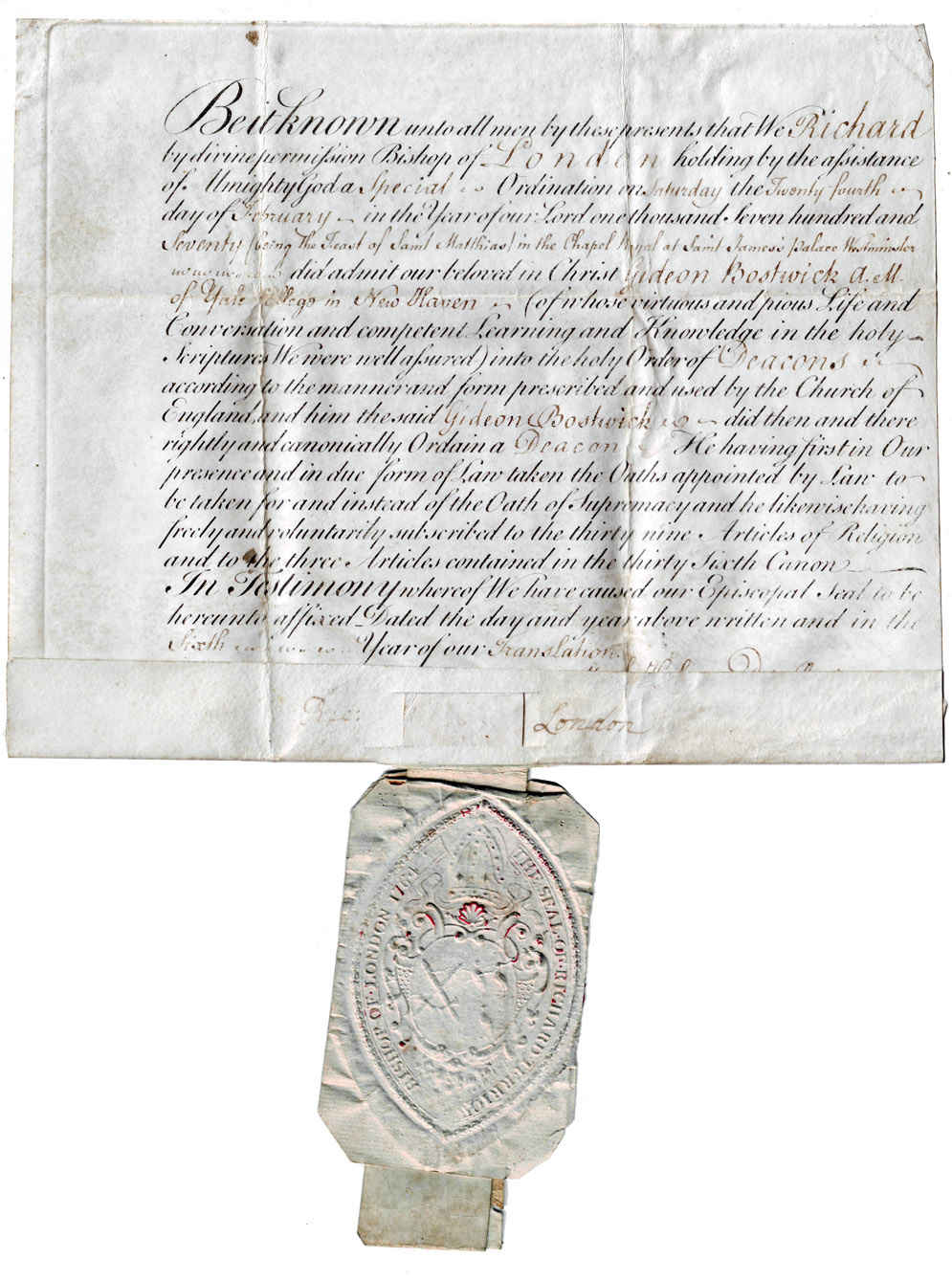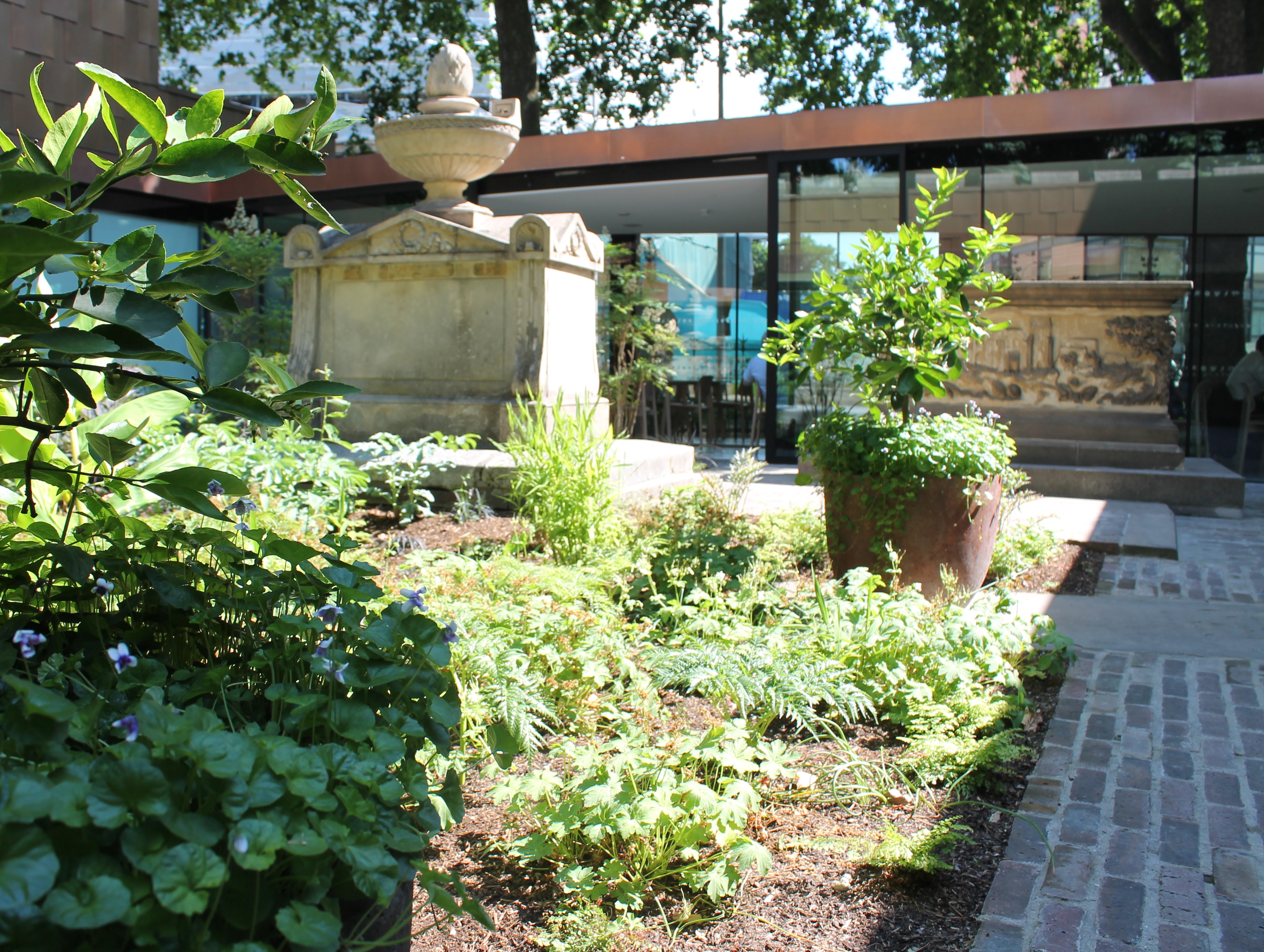|
John Nash (architect)
John Nash (18 January 1752 – 13 May 1835) was an English architect of the Georgian and Regency eras. He was responsible for the design, in the neoclassical and picturesque styles, of many important areas of London. His designs were financed by the Prince Regent and by the era's most successful property developer, James Burton. Nash also collaborated extensively with Burton's son, Decimus Burton. Nash's best-known solo designs are the Royal Pavilion, Brighton; Marble Arch; and Buckingham Palace. His best-known collaboration with James Burton is Regent Street and his best-known collaborations with Decimus Burton are Regent's Park and its terraces and Carlton House Terrace. The majority of his buildings, including those that the Burtons did not contribute to, were built by James Burton's company. Background and early career Nash was born in 1752, probably in Lambeth, south London. His father was a millwright also called John (1714–1772). From 1766 or 1767, Nash ... [...More Info...] [...Related Items...] OR: [Wikipedia] [Google] [Baidu] |
Lambeth
Lambeth () is a district in South London, England, which today also gives its name to the (much larger) London Borough of Lambeth. Lambeth itself was an ancient parish in the county of Surrey. It is situated 1 mile (1.6 km) south of Charing Cross, across the river from Westminster Palace. The population of the London Borough of Lambeth was 303,086 in 2011. The area experienced some slight growth in the medieval period as part of the manor of Lambeth Palace. By the Victorian era, the area had seen significant development as London expanded, with dense industrial, commercial and residential buildings located adjacent to one another. By this point, there were distinct localities (like Vauxhall) appearing on the map, and a separate parish of South Lambeth was created in 1861. The changes brought by World War II altered much of the fabric of Lambeth. Subsequent development in the late 20th and early 21st centuries has seen an increase in the number of high-rise buildings. The ... [...More Info...] [...Related Items...] OR: [Wikipedia] [Google] [Baidu] |
Howard Colvin
Sir Howard Montagu Colvin (15 October 1919 – 27 December 2007) was a British architectural historian who produced two of the most outstanding works of scholarship in his field: ''A Biographical Dictionary of British Architects, 1600–1840'' and ''The History of the King's Works''. Life and works Born in Sidcup, Colvin was educated at Trent College and University College London. In 1948, he became a Fellow of St John's College, Oxford where he remained until his death in 2007. He was a member of the Royal Commission on the Historical Monuments of England 1963–76, the Historic Buildings Council for England 1970–84, the Royal Fine Art Commission 1962–72, and other official bodies. He is most notably the author of ''A Biographical Dictionary of British Architects, 1600–1840'' which appeared in its original form in 1954. Yale University Press produced a third edition in 1995, and he had just completed his work on the fourth edition at the time of his death. On ... [...More Info...] [...Related Items...] OR: [Wikipedia] [Google] [Baidu] |
Hereford
Hereford ( ) is a cathedral city and the county town of the ceremonial county of Herefordshire, England. It is on the banks of the River Wye and lies east of the border with Wales, north-west of Gloucester and south-west of Worcester. With a population of 61,900 in 2024, it is the largest settlement in Herefordshire. An early town charter from 1189, granted by Richard I of England, describes it as "Hereford in Wales". Hereford has been recognised as a city since time immemorial, with the status being reconfirmed in October 2000. Hereford has been a civil parish since 2000. Products from Hereford include cider, beer, leather goods, nickel alloys, poultry, chemicals and sausage rolls, as well as the Hereford breed of cattle. Toponymy The Herefordshire edition of Cambridge County Geographies states "a Welsh derivation of Hereford is more probable than a Saxon one", but the name "Hereford" is also said to come from the Anglo-Saxon "''here''", an army or formation of s ... [...More Info...] [...Related Items...] OR: [Wikipedia] [Google] [Baidu] |
Adultery
Adultery is extramarital sex that is considered objectionable on social, religious, moral, or legal grounds. Although the sexual activities that constitute adultery vary, as well as the social, religious, and legal consequences, the concept exists in many cultures and shares some similarities in Judaism, Christianity and Islam. Adultery is viewed by many jurisdictions as offensive to public morals, undermining the marriage relationship. Historically, many cultures considered adultery a very serious crime, some subject to severe punishment, usually for the woman and sometimes for the man, with penalties including capital punishment, mutilation, or torture. Such punishments have gradually fallen into disfavor, especially in Western countries from the 19th century. In countries where adultery is still a criminal offense, punishments range from fines to caning and even capital punishment. Since the 20th century, criminal laws against adultery have become controversial, with m ... [...More Info...] [...Related Items...] OR: [Wikipedia] [Google] [Baidu] |
Neath
Neath (; ) is a market town and Community (Wales), community situated in the Neath Port Talbot, Neath Port Talbot County Borough, Wales. The town had a population of 50,658 in 2011. The community of the parish of Neath had a population of 19,258 in 2011. Historic counties of Wales, Historically in Glamorgan, the town is located on the River Neath, east-northeast of Swansea. Etymology The town's English name ultimately derives from "" the original Welsh name for the River Neath and is known to be Proto-Celtic language, Celtic or Pre-Celtic. A meaning of 'shining' or 'brilliant' has been suggested, as has a link to the older Indo-European root (simply meaning 'river'). As such, the town may share its etymology with the town of Stratton, Cornwall and the River Nidd in Northern England. History Roman fort The town is located at a ford (crossing), ford of the River Neath and its strategic situation is evident by a number of Celts, Celtic hill forts, surrounding the town. The Ro ... [...More Info...] [...Related Items...] OR: [Wikipedia] [Google] [Baidu] |
Aberavon
Aberavon () is a town and community in Neath Port Talbot county borough, Wales. The town derived its name from being near the mouth of the river Afan, which also gave its name to a medieval lordship. Today it is essentially a district of Port Talbot, covering the central and south western part of the town. Aberavon is also the name of the nearby Blue Flag beach and the parish covering the same area. History Little is known about Aberavon before Norman times. Bronze Age remains have been found in the hills behind the town. Roman artifacts have been found near the sea, including when the docks were being built in the 19th century. About 1090 the invading Normans deposed Iestyn ap Gwrgant, the ruler of Glamorgan. His son, Caradog ab Iestyn, was the only Welsh lord to retain lands in Glamorgan – the area between the Afan and Neath rivers – and he became the first of the Lords of Afan. Caradoc built a castle in Aberafan near the present site of St Mary's Church. This ... [...More Info...] [...Related Items...] OR: [Wikipedia] [Google] [Baidu] |
Bishop Of London
The bishop of London is the Ordinary (church officer), ordinary of the Church of England's Diocese of London in the Province of Canterbury. By custom the Bishop is also Dean of the Chapel Royal since 1723. The diocese covers of 17 boroughs of Greater London north of the Thames, River Thames (historically the City of London and the County of Middlesex) and a small part of the County of Surrey (the district of Borough of Spelthorne, Spelthorne, historically part of Middlesex). The Episcopal see, see is in the City of London, where the seat is St Paul's Cathedral, which was founded as a cathedral in 604 and was rebuilt from 1675 following the Great Fire of London (1666). Third in seniority in the Church of England after the archbishops of Archbishop of Canterbury, Canterbury and Archbishop of York, York, the bishop is one of five senior bishops who sit as of right as one of the 26 Lords Spiritual in the House of Lords (for the remaining diocesan bishops of lesser rank, seats are ... [...More Info...] [...Related Items...] OR: [Wikipedia] [Google] [Baidu] |
Consistory Court
A consistory court is a type of ecclesiastical court, especially within the Church of England where they were originally established pursuant to a charter of King William the Conqueror, and still exist today, although since about the middle of the 19th century consistory courts have lost much of their subject-matter jurisdiction. Each diocese in the Church of England has a consistory court (called in the Diocese of Canterbury the ''Commissary Court''). History of consistory courts in England Consistory courts have been in existence in England since shortly after the Norman conquest and their jurisdiction and operation was essentially unaffected by the English reformations. Originally, the jurisdiction of consistory courts was very wide indeed and covered such matters as defamation, probate, and matrimonial causes as well as a general jurisdiction over both clergy and laity in relation to matters relating to church discipline and to morality more generally and to the use and con ... [...More Info...] [...Related Items...] OR: [Wikipedia] [Google] [Baidu] |
Garden Museum
The Garden Museum (formerly known as the Museum of Garden History) in London is Britain's only museum of the art, history and design of gardens. The museum re-opened in 2017 after an 18-month redevelopment project. The building is largely the Victorian reconstruction of the Church of St Mary-at-Lambeth which was deconsecrated in 1972 and was scheduled to be demolished. It is adjacent to Lambeth Palace on the south bank of the River Thames in London, on Lambeth Road. In 1976, John and Rosemary Nicholson traced the tomb of the two 17th-century royal gardeners and plant hunters John Tradescant the Elder and the Younger to the churchyard, and were inspired to create the Museum of Garden History.Tradescant Trust (1979) The Tradescant Story (London). It was the first museum in the world dedicated to the history of gardening. The Museum's main gallery is on the first floor, in the body of the church. The collection includes tools, art, and ephemera of gardening, including a gall ... [...More Info...] [...Related Items...] OR: [Wikipedia] [Google] [Baidu] |
Surveying
Surveying or land surveying is the technique, profession, art, and science of determining the land, terrestrial Plane (mathematics), two-dimensional or Three-dimensional space#In Euclidean geometry, three-dimensional positions of Point (geometry), points and the Euclidean distance, distances and angles between them. These points are usually on the surface of the Earth, and they are often used to establish maps and boundaries for ownership, locations, such as the designated positions of structural components for construction or the surface location of subsurface features, or other purposes required by government or civil law, such as property sales. A professional in land surveying is called a land surveyor. Surveyors work with elements of geodesy, geometry, trigonometry, regression analysis, physics, engineering, metrology, programming languages, and the law. They use equipment, such as total stations, robotic total stations, theodolites, Satellite navigation, GNSS receivers, ... [...More Info...] [...Related Items...] OR: [Wikipedia] [Google] [Baidu] |
Newington, London
Newington is a district of Central London, just south of the River Thames, and part of the London Borough of Southwark. It was an ancient parish and the site of the early administration of the county of Surrey. It was the location of the County of London Sessions House from 1917, in a building now occupied by the Inner London Crown Court. History Toponymy The name means "new farmstead" to refer to a newer part of the manor of Walworth. It lay on the old Roman road from London to West Sussex, specifically directly to Chichester (also linking to London/Westminster much of Surrey including Kingston upon Thames, Kingston and Guildford) (this was Stane Street (Chichester), one of the Stane Streets). The proximity to London meant stalls, stables and stores were by the late medieval period numerous. The first mention of Newington (or Neweton) occurs in the Testa de Nevill (a survey of feudal tenure officially known as the Book of Fees compiled 1198–1242) during the reign of Henry III ... [...More Info...] [...Related Items...] OR: [Wikipedia] [Google] [Baidu] |
Cronkhill Villa Cropped
Cronkhill, Atcham, Shropshire, designed by John Nash, is "the earliest Italianate villa in England". Drawing on influences from the Italian Campagna and the Picturesque, including the art of Claude Lorrain, it began an architectural style that was hugely influential in England in the first half of the nineteenth century. Major examples include Trentham Park and Osborne House. Nash's "most original building", it is Grade I listed. History The house was designed by John Nash in 1802 for Francis Walford. Walford was a friend of Thomas Noel Hill, 2nd Baron Berwick, of nearby Attingham Park, and the agent for Berwick's Attingham estates. Mansbridge considers that the design was "almost certainly inspired" by Claude Lorrain's painting "Landscape near Rome with a View of the Ponte Molle." Lord Berwick was the owner of two Claude landscapes. Walford lived at Cronkhill, managing Lord Berwick's Attingham interests, until their relationship ended acrimoniously in 1828, when Walfo ... [...More Info...] [...Related Items...] OR: [Wikipedia] [Google] [Baidu] |








